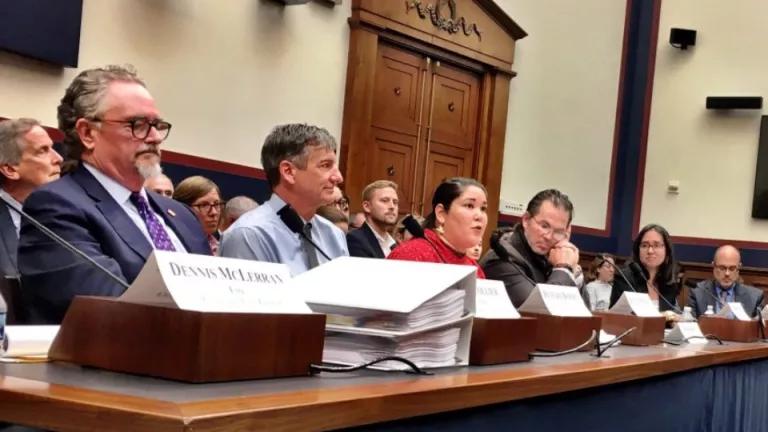“Stop Pebble Mine” Coalition Gets the Word Out
The ad is part of a Stop Pebble Mine media campaign developed by Bristol Bay Tribes, Alaskan business leaders, commercial fishermen, and community and nonprofit organizations dedicated to protecting Bristol Bay from the imminent threat of the proposed Pebble Mine.

“It Should Be Dead But It’s Not,” reads a full-page ad running in the Anchorage Daily News.
“Instead, Pebble Mine is on the fast track for approval.”
The ad is part of a new media campaign to Stop Pebble Mine developed by Bristol Bay Tribes, Alaskan business leaders, commercial fishermen, and community and nonprofit organizations dedicated to protecting the region from the imminent threat of the proposed gold and copper mine.
The Pebble Mine absolutely should be dead. It risks a $1.5 billion annual sustainable commercial fishery that provides 14,000 jobs and supplies half of the world’s sockeye salmon. Salmon are not only the linchpin of the region’s economy, but also its lifeblood, providing food, a subsistence-based livelihood, and the sustainable foundation for the language, spirituality and social structure of its Tribal communities.
Despite overwhelming local and state opposition—and the threat of irreparable damage to Bristol Bay—the Trump administration is rushing permitting for the Pebble Mine through at record speed.
The ad campaign urges the Environmental Protection Agency (EPA) to #VetoPebbleMine, using its authority under Section 404(c) of the Clean Water Act.
That’s a rarely used but an essential provision of law that allows the EPA to restrict, prohibit, deny, or withdraw the use of an area as a disposal site for dredged or fill material “whenever” the agency determines the discharge will have unacceptable adverse effects on municipal water supplies, shellfish beds and fishery areas, wildlife, or recreational opportunities.
EPA first initiated the 404(c) process to protect Bristol Bay from Pebble Mine in 2011 at the express request of Bristol Bay tribes, the Bristol Bay Native Corporation, the commercial and sport fishing industries, conservation organizations and others. Under the Obama administration – and after three years of scientific study that included two independent peer reviews—EPA issued a proposed determination under Section 404(c) in 2014 that would have placed common sense restrictions on the mine.
Unfortunately, in a purely political move not supported by reason or science, EPA withdrew the proposed determination last year—choosing instead to rely on the U.S. Army Corps of Engineers’ permitting process. That permitting process, however, is fatally flawed.
Throughout the permitting process, the Army Corps has cut legal corners, relied on outdated science, and underestimated potential impacts.
Next week, the Corps is expected to issue a final Environmental Impact Statement (EIS) that is similar to its draft EIS, which prompted federal and state agencies to draft lengthy comments registering their serious concerns. A former Rio Tinto mining expert panned that analysis as “fatally flawed,” and one member of Congress called it a “sham.”
Last year, Congress echoed the concerns voiced by Tribes and cooperating federal agencies that the Army Corps’ permitting process is “inadequate and does not meet the Army Corps’ obligations to thoroughly evaluate the potential impacts of the proposed project,” finding:
The DEIS lacks certain critical information about the proposed project and related mitigation and therefore likely underestimates its potential risks and impacts. Sound science must guide Federal decisionmaking and all gaps and deficiencies identified in comments from Federal agencies and other stakeholders, including Alaska Natives, must be fully addressed even if that requires additional scientific study, data collection and more comprehensive analysis of the project’s potential impacts. (emphasis added)
Congress gave the Army Corps a clear and bipartisan directive: to “fully address” “all gaps and deficiencies” identified by stakeholders.
The Army Corps ignored this directive and continues to relentlessly fast track the permitting process. The agency has shown no interest in listening to Tribes, Alaskans, Americans, or even Congress.
Congress also called on EPA to “exercise” its “enforcement authority under the Clean Water Act, at an appropriate time in the permitting process to ensure the full protection of the region.”
With the Army Corps expected to issue its final EIS next week, the time to act is now.
Tell the EPA to Veto the Pebble Mine.
Also, please follow and share Stop Pebble Mine on Facebook, Instagram, and Twitter.




